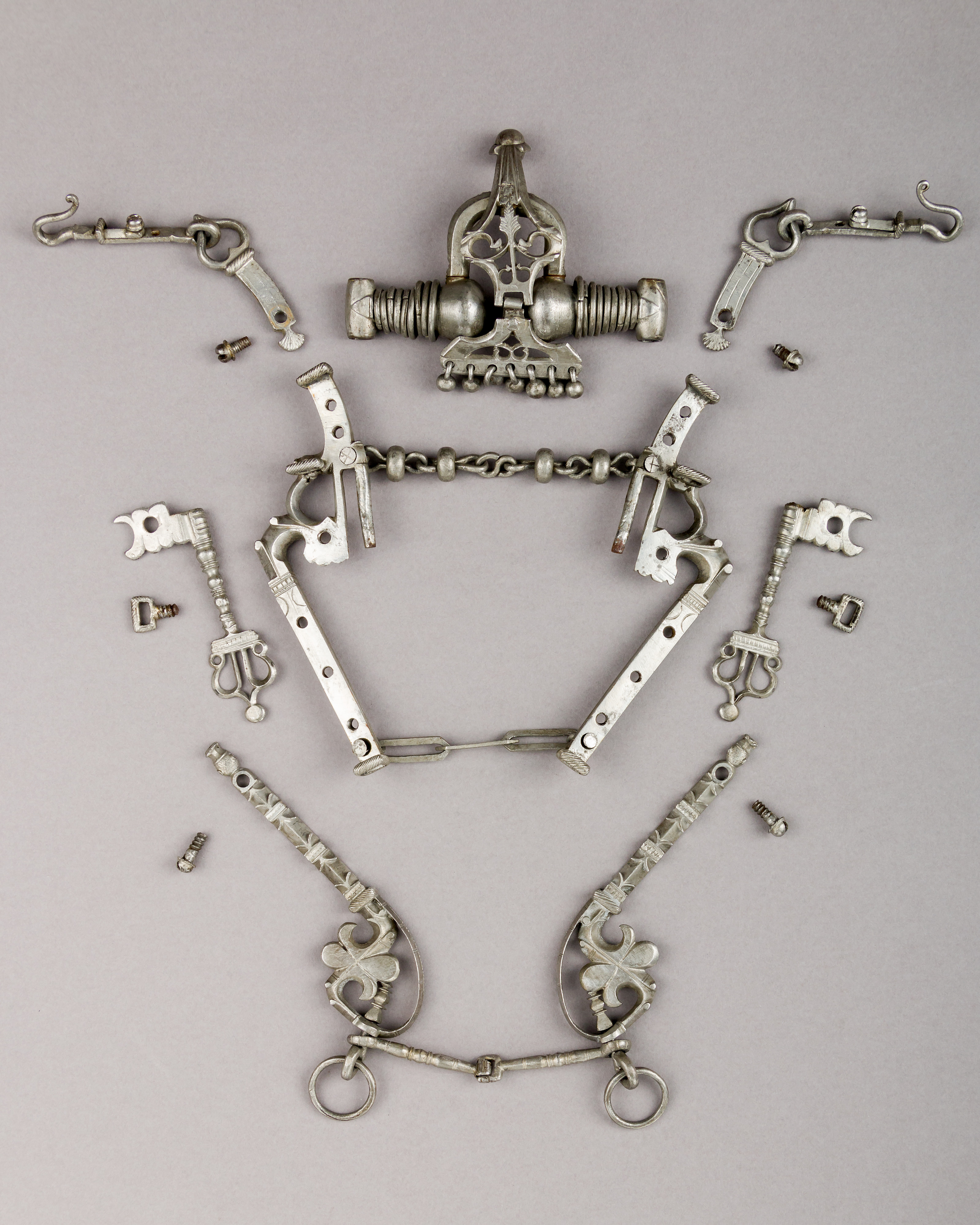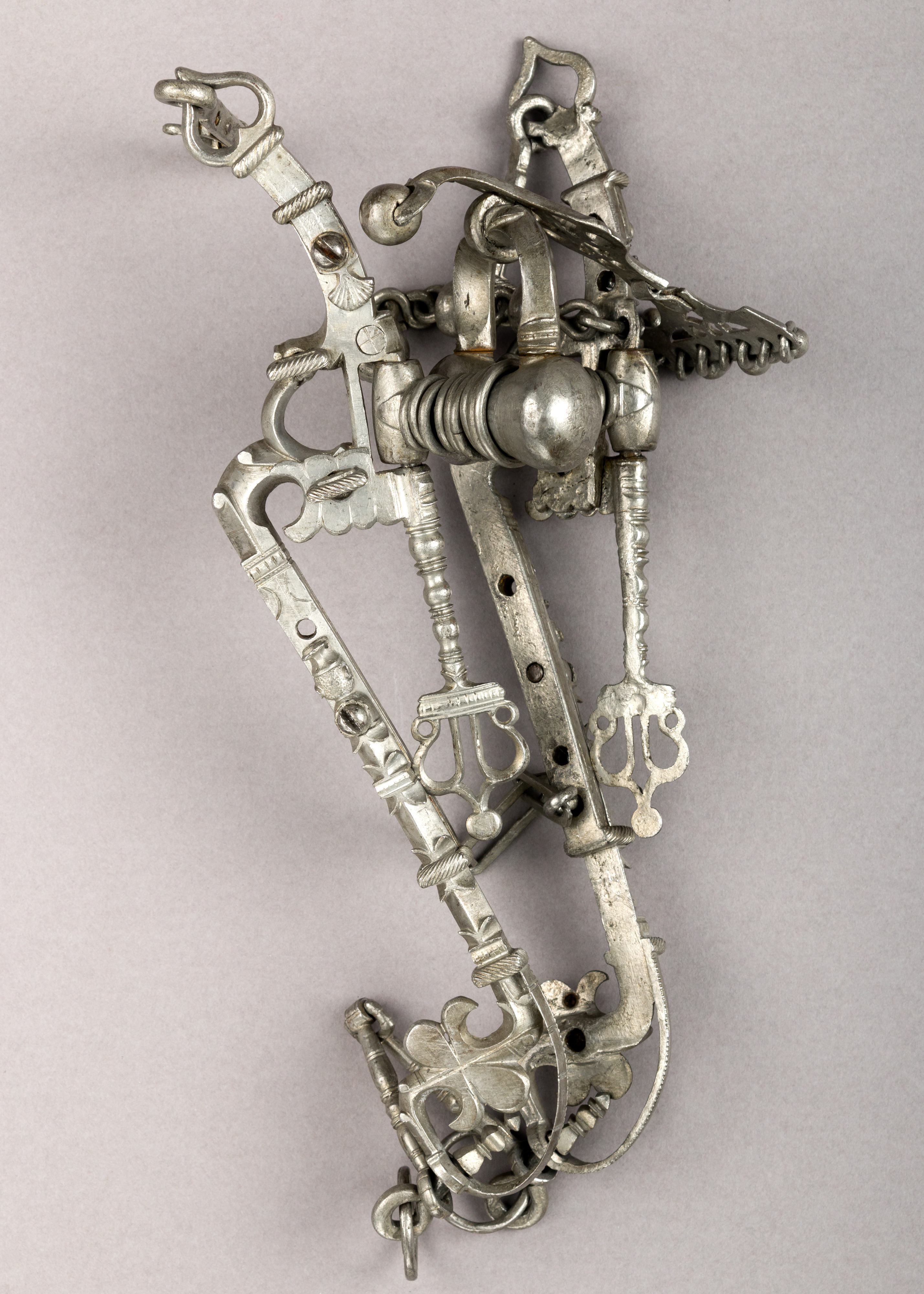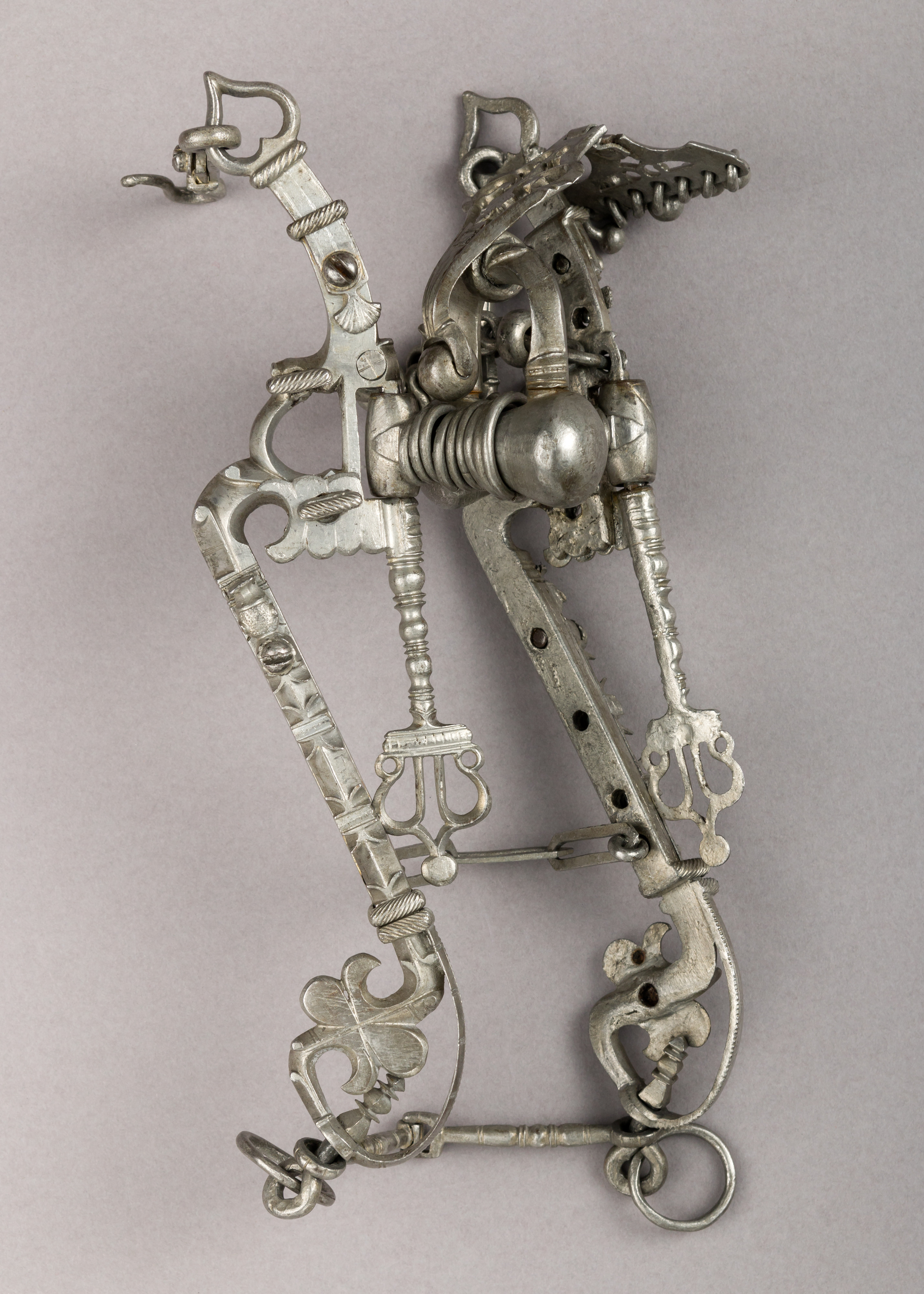Curb Bit
Not on view
According to contemporary equestrian manuals, this severe mouthpiece was designed for horses with a bad mouth, low bars (the part of the horses’ jaw without teeth), a thick tongue, arming lips (lips placed between the bars and the mouthpiece). It is also designed to correct the horse which leans too much on the bit and forces the hand. The rolling bead at the top of the trebuchet (the central swinging piece) has a direct action on the palate and holds the head in place.
This type of bit is called a geschraubt Biss in German, literally a 'screwed bit', a kind of adjustable dressage bit popular in Germany in the 16th and 17th centuries. The three lengths of the shanks (the levers on the sides of the bit to which the reins were attached), allow the rider to adjust the severity of their leverage effect. In its shortest position the bit is weaker. The longer its shanks and the further forward its swivel rings for the reins, the more severe it becomes. The rider also had the option of changing the whole mouthpiece. Thus, the rider could transform it into different bits in order to find the perfect one for a horse under training, or use the same bit on different horses with different needs. Their relative fragility however prevented them for being used at war, rather, they were luxury devices for dressage and leisure riding.
The style of this bit, with its pierced elements and particularly its very sculptural geometric decoration on its cheekpieces, is typical of the bits made in Saxon regions in the 16th century.
Due to rights restrictions, this image cannot be enlarged, viewed at full screen, or downloaded.
This artwork is meant to be viewed from right to left. Scroll left to view more.








